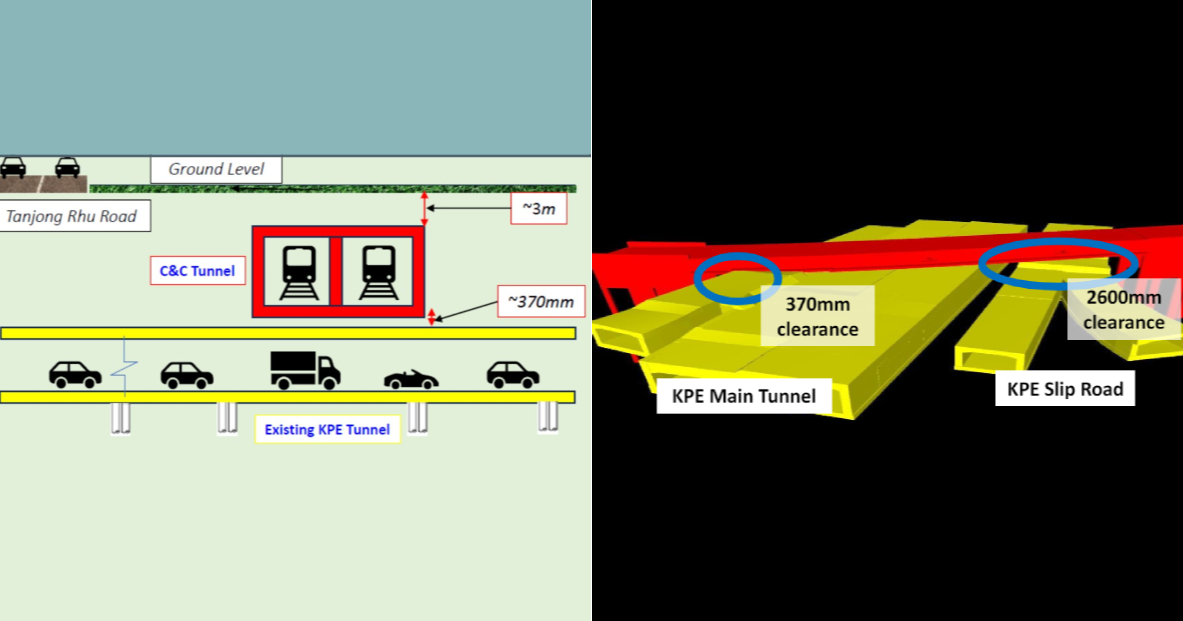The distance separating the new Thomson-East Coast Line (TEL) and the existing Kallang-Paya Lebar Expressway (KPE) below it, which are both underground, is just 37cm.
That is about the length of a man's forearm.
This was revealed by the Land Transport Authority (LTA) a month before the official opening of the fourth stage of the TEL on Jun. 23, 2024, which will see seven new stations begin operations — Tanjong Rhu, Katong Park, Tanjong Katong, Marine Parade, Marine Terrace, Siglap, and Bayshore.
According to information shared by LTA in a diagram showing the cross-section of the infrastructure below ground surface, the TEL tunnel is built over two sections of the KPE.
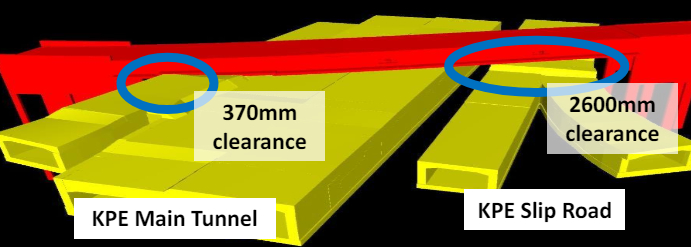 Photo via LTA
Photo via LTA
The MRT tunnel is 3m below the existing ground level and just 37cm above the KPE tunnel at the closest point.
The distance between the MRT tunnel and KPE tunnel is wider at 2.6m at another portion of the KPE.
As a testament to the engineering feat achieved, the completed construction will see trains run in the TEL tunnel built diagonally above the KPE to get to the Tanjong Rhu station.
That portion of the TEL tunnel took 24 months to complete, LTA said.
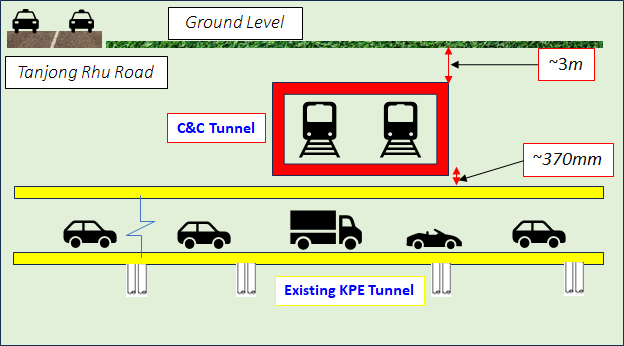 Photo via LTA
Photo via LTA
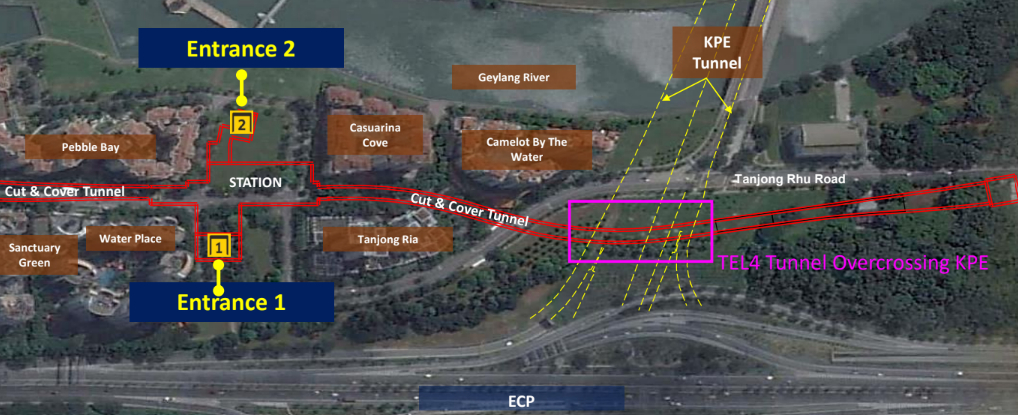 Photo via LTA
Photo via LTA
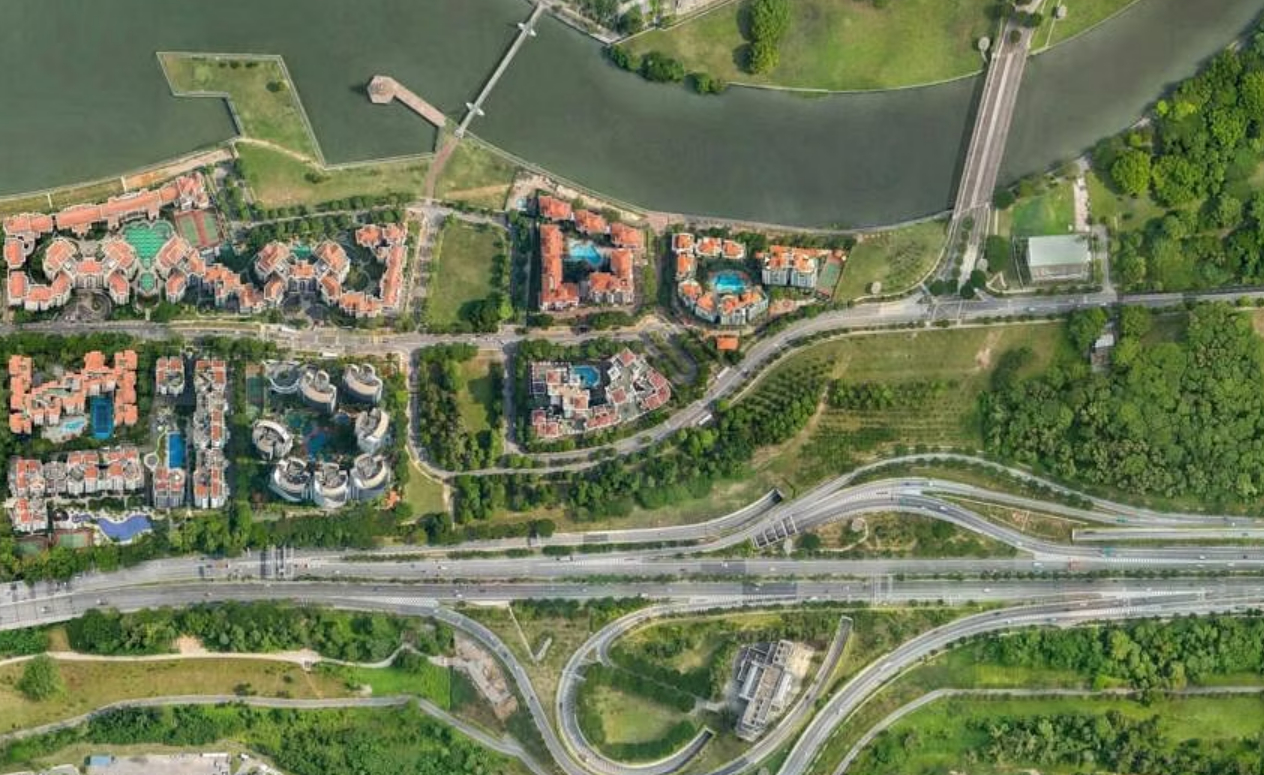 Photo via Google Earth
Photo via Google Earth
The construction of the two networks, with the newer one on top, is necessary as this is the only route that enables the MRT line to serve residents in the Tanjong Rhu area.
The completion of the fourth stage of the TEL will improve connectivity for residents living in the southeast of Singapore.
A necessary move
A LTA spokesperson shared that during the planning stage, they studied engineering drawings and performed site investigations to ensure that construction in the area would be safe.
In addition, the tunnel's alignment was also "necessary" as the area was densely built up with residential buildings.
If the tunnel was to avoid overcrossing the KPE, the alignment would need to be shifted beyond the East Coast Parkway and would not serve residents in the Tanjong Rhu area.
"As such, construction of the cut and cover tunnel along this stretch was the most feasible and safest alignment for trains to move through," the LTA spokesperson said.
Engineers had to carry out the digging process from the ground surface in such a way as to ensure there was always a buffer right above KPE tunnel.
The technique used was also different.
It involved digging up a trench to construct the tunnel before filling up the surface instead of drilling through the earth without removing the ground above.
Ground improvement techniques, such as wet soil mixing and jet grouting, temporary earth retaining structures kike sheet piles and soldier piles, were used for enhancing and stabilising the ground before the construction works began.
Ground monitoring instruments were also installed to monitor ground and structural movements before excavation works.
These instruments provided real-time data that helped ensure the stability of works during excavation.
Top photos via LTA
If you like what you read, follow us on Facebook, Instagram, Twitter and Telegram to get the latest updates.

